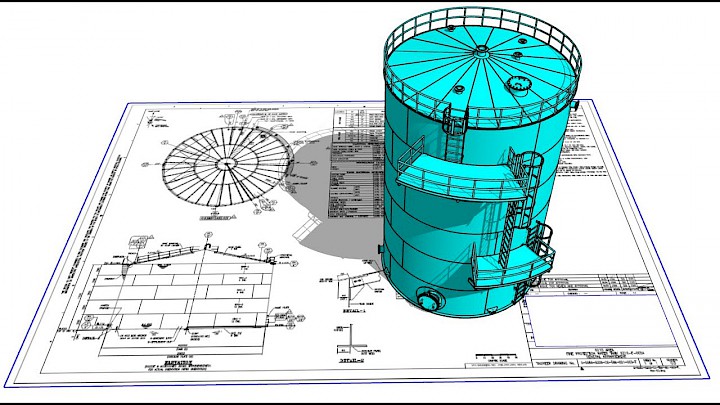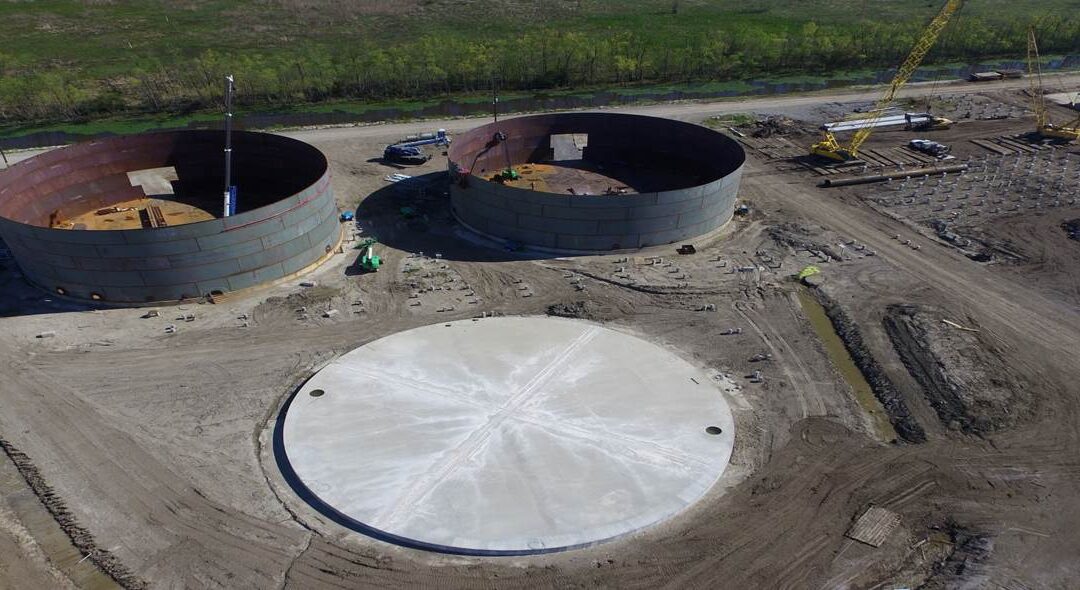How API 650 Welding Inspection Strengthens Industry Confidence in Fabrication
Wiki Article
A Step-by-Step Look at the Installation Process of Welding Assessment Techniques
Welding examination is a critical procedure that assures architectural honesty and safety. The setup of inspection methods entails numerous organized actions, each indispensable to attaining trusted results. From preparation and tool option to carrying out non-destructive and visual examinations, each phase demands careful attention. Comprehending these treatments can significantly enhance quality control in welding projects. What difficulties occur in carrying out these techniques, and just how can they be efficiently attended to?Understanding the Value of Welding Assessment
Welding examination is an essential part of ensuring structural integrity and safety in building and construction and production procedures. This practice entails evaluating welded joints for problems, making sure that they meet specific standards and laws. By methodically evaluating weld high quality, inspectors can recognize concerns such as fractures, voids, and incomplete blend, which can jeopardize the strength and toughness of structures.The importance of welding evaluation extends beyond instant security issues; it assists protect against costly failures and potential risks in the long term. Effective assessment strategies foster compliance with market requirements, thus enhancing the general integrity of bonded components. On top of that, a durable evaluation procedure contributes to maintaining the online reputation of building contractors and manufacturers, as it assures customers of the high quality of their projects. Ultimately, recognizing the significance of welding assessment is essential for promoting safe building and construction techniques and ensuring the durability of important framework and items.
Selecting the Right Devices for Assessment
When selecting the proper devices for inspection, it is crucial to contemplate the specific demands of the welding procedure and the products included. Various evaluation methods, such as visual, ultrasonic, and radiographic screening, require unique devices tailored to their distinct demands. For visual evaluations, devices like amplifying calipers and glasses are vital for assessing weld quality. Ultrasonic screening requires specialized tools efficient in sending and receiving acoustic waves to find internal defects. Radiographic screening, on the various other hand, utilizes X-ray or gamma-ray resources along with sensitive film or digital detectors to expose disparities.
Additionally, personal protective tools (PPE) is necessary to ensure the security of examiners throughout analyses. Choosing the right devices not only improves the precision of examinations but likewise adds to the total honesty and security of the welding job. Consequently, an extensive understanding of offered devices and their applications is crucial for effective welding assessment.
Planning for the Inspection Process
Prior to starting the evaluation procedure, it is vital to develop a complete plan that lays out the scope and goals of the analysis. This plan must include specific standards that specify what constitutes acceptable top quality in the welding work being examined. Determining the pertinent codes and requirements is crucial, as they will direct the assessment requirements and techniques.In addition, workers included in the examination should be adequately trained and certified in welding examination methods to guarantee integrity and accuracy. A checklist can be helpful in arranging the different facets of the evaluation, varying from tools preparedness to environmental problems that can affect the evaluation.

Logistical considerations such as scheduling, readily available sources, and communication in between team members ought to be addressed. By preparing systematically, examiners can improve the effectiveness of the evaluation and ensure that all crucial variables are appropriately considered prior to proceeding with the evaluation itself.
Carrying Out Visual Examinations

Conducting visual evaluations is an essential action in the welding assessment procedure, calling for careful prep work to guarantee effective examination. Assessors have to be familiar with crucial defect signs that can indicate potential problems in weld high quality. By focusing on these aspects, one can boost the overall dependability of the assessment results.
Planning For Visual Assessment
Aesthetic examination works as a vital initial step in the welding examination process, guaranteeing that any type of possible problems are determined early (API 650 Welding Inspection). Correct preparation is vital for efficient aesthetic assessment. Assessors should begin by examining relevant documents, including welding treatments and specs, to comprehend the project click requirements. They should collect essential devices, such as magnifying glasses, flashlights, and ideal personal protective tools (PPE) A detailed assessment of the assessment area is essential; examiners need to validate it is free and tidy of blockages. Additionally, it is important to establish perfect illumination conditions to enhance visibility of welds. By taking these preparatory actions, inspectors can develop a setting helpful to determining discrepancies and assuring the stability of the bonded frameworksSecret Issue Indicators
A comprehensive understanding of key issue indications is necessary during visual assessments to assure the top quality and security of welded joints. Examiners should concentrate on particular her comment is here signs such as splits, porosity, damages, and incomplete blend. Fractures may look like sharp lines and can endanger architectural integrity. Porosity manifests as tiny openings that can weaken weld strength. Undercuts, which are grooves along the weld side, can cause tension concentration. Insufficient blend indicates that the weld steel did not effectively bond with the base material, resulting in a weak joint. By systematically identifying these problems, assessors can identify conformity with sector standards and improve the total reliability of welded structures, inevitably contributing to much safer functional problems.Implementing Non-Destructive Checking Methods

Countless non-destructive testing (NDT) strategies are important to ensuring the stability of bonded frameworks without compromising their functionality. These techniques allow examiners to evaluate weld high quality and detect flaws without triggering damage to the products being checked. Typical NDT methods include ultrasonic screening, radiographic testing, magnetic particle screening, and color penetrant screening. Each method offers a particular function, addressing different kinds of problems such as fractures, porosity, or incomplete fusion.
Executing NDT techniques needs a systematic approach, starting with choosing the suitable approach based on the products and the nature of the weld. Training workers in these strategies is vital for exact results. Furthermore, developing clear treatments and requirements assurances uniformity throughout the evaluation process. By incorporating NDT right into the welding assessment operations, companies can improve try this site the integrity of their items while decreasing possible risks associated with architectural failings. This aggressive method eventually contributes to keeping security and top quality standards in welded building and constructions.
Analyzing and documenting Examination Results
Effective documentation and evaluation of inspection outcomes are necessary components of the welding inspection procedure. Accurate records of assessment findings function as a reference for quality guarantee and compliance with industry requirements. API 650 Welding Inspection. Assessors must make use of electronic systems or organized kinds to log details such as the kind of weld, evaluation techniques utilized, and any inconsistencies identified during the assessmentComplete analysis is important once data is collected. This entails comparing outcomes against developed criteria to determine fads or reoccuring concerns. Analytical devices may be utilized to quantify defects and analyze their influence on general weld top quality.
Furthermore, efficient interaction of searchings for to appropriate stakeholders is important. Recaps and records must be succinct and clear, highlighting essential understandings and referrals for corrective activities. By systematically examining and recording inspection outcomes, companies can promote constant improvement in welding practices and enhance item honesty.
Frequently Asked Concerns
What Credentials Are Needed to Come To Be a Welding Examiner?
To end up being a welding assessor, one usually requires pertinent certifications such as AWS CWI, in addition to experience in welding techniques, understanding of welding codes, and efficiency in evaluation methods to guarantee quality and security criteria.Exactly How Usually Should Welding Inspections Be Carried Out?
Welding inspections should be carried out frequently, generally after each weld is completed, and regularly throughout projects. Aspects such as project complexity, sector criteria, and regulatory requirements can affect the frequency of these inspections.What Is the Cost of Welding Evaluation Solutions?
The expense of welding evaluation services varies substantially based upon aspects such as job area, dimension, and intricacy. Typically, costs vary from $100 to $150 per hour, with additional charges for specialized testing and certifications.Exist Certifications for Welding Inspectors?
Yes, there are various accreditations for welding assessors, consisting of those supplied by the American Welding Society (AWS) and the International Institute of Welding (IIW) These qualifications guarantee inspectors have the needed skills and knowledge for reliable examinations.
How Do I Select an Evaluation Service Company?
To choose an evaluation solution company, one should review credentials, experience, sector online reputation, and customer reviews. Furthermore, comparing service offerings and rates can help ensure the picked supplier satisfies specific job requires effectively.Furthermore, workers involved in the assessment should be effectively educated and licensed in welding examination methods to assure reliability and accuracy. Performing aesthetic assessments is an important step in the welding evaluation procedure, calling for mindful prep work to ensure reliable assessment. Aesthetic evaluation serves as a crucial very first step in the welding examination process, guaranteeing that any kind of potential issues are identified early. Reliable paperwork and evaluation of evaluation results are important parts of the welding assessment procedure. Welding assessments need to be conducted consistently, generally after each weld is finished, and regularly during jobs.
Report this wiki page